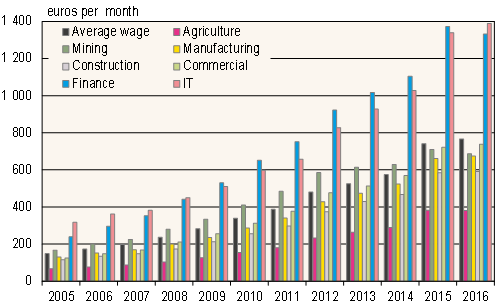BOFIT Weekly Review 25/2017
Wages in China's public-sector last year increased faster than in the private sector
Wage data for 2016 published by China's National Bureau of Statistics show that average wages in urban areas (including bonuses and other compensation) in non-private sector (government organisations and state-owned enterprises) rose by nearly 7 % y-o-y in real terms to 5,630 yuan (770 euros) a month. Almost half of those working in urban areas were employed by the non-private sector.
The average private-sector wage was just 3,570 yuan (490 euros) a month, and private wages rose a slower pace. Real private-sector wages last year grew by 6 % on average, but as recently as 2011–2014 were rising faster than public-sector wages. The average real wage of internal migrants working in cities grew by only 4 % to an average wage of 3,230 yuan (440 euros) a month.
In the non-private sector, those in the IT branch saw their wages surpass state workers in the finance sector. Private-sector wages were lower than in the non-private sector in most branches, even if the relative differences varied across branches. There were also large differences in wage levels across cities.
China's Ministry of Human Resources and Social Security finds that the number of employed people increased by 1.5 million last year to 766 million. Some 44 % worked in the service sector, 28 % in agriculture and 29 % in industry. While the number of people working in primary production and manufacturing fell, the number of people working in the service sector last year rose by about 9 million from 2015. The number of people employed in urban areas rose by 10 million to 53 % of all employed people.
Average non-private-sector wage in China, euros per month

Sources: CEIC, BOFIT.